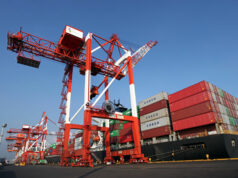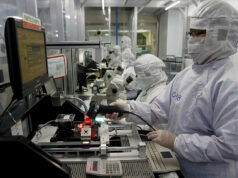N.Korea fires 2 missiles in latest testing frenzy

SEOUL — Nuclear-armed North Korea fired what appeared to be two short-range ballistic missiles into the sea off its east coast on Thursday, South Korea’s military said, in the sixth round of missile tests this month.
It is among the most missiles ever launched by North Korea in a month, analysts said, as it began 2022 with a display of a dizzying array of new and operational weapons.
South Korea’s Joint Chiefs of Staff (JCS)said it had detected the launch of what it presumed were two ballistic missiles at about 8 a.m. from near Hamhung, on North Korea’s east coast. They traveled for about 190 km to a maximum altitude of 20 km, JCS said.
The suspected missiles appeared to have landed outside Japan’s exclusive economic zone, Japanese Defense Minister Nobuo Kishi told reporters.
Japanese Prime Minister Fumio Kishida said the government was gathering details on the launches but any tests of ballistic missiles were “deeply regrettable” and violated U.N. Security Council resolutions.
The US government condemned the missile tests, a Department of State spokesperson said in a written statement, calling the launches a violation of multiple U.N. Security Council resolutions.
North Korea said this month it would bolster its defenses against the United States and consider resuming “all temporally suspended activities”, an apparent reference to a self-imposed moratorium on tests of nuclear weapons and long-range missiles.
On Tuesday, North Korea fired two cruise missiles into the sea off its east coast, South Korea’s military said, amid rising tension over its series of weapons tests.
Earlier in the month, North Korea tested tactical guided missiles, two “hypersonic missiles” capable of high speed and maneuvering after lift-off, and a railway-borne missile system.
“The (Kim Jong Un) regime is developing an impressive diversity of offensive weapons despite limited resources and serious economic challenges,” said Leif-Eric Easley, an international affairs professor at Ewha University in Seoul.
Certain tests aim to develop new capabilities, especially for evading missile defenses, while other launches are intended to demonstrate the readiness and versatility of missile forces that North Korea has already deployed, he added.
“Some observers have suggested that the Kim regime’s frequent launches are a cry for attention, but Pyongyang is running hard in what it perceives as an arms race with Seoul,” Easley said.
In a speech to the U.N.-sponsored Conference on Disarmament on Tuesday, North Korea’s Ambassador to the United Nations in Geneva, Han Tae Song, accused the United States of staging hundreds of “joint war drills” while shipping high-tech offensive military equipment into South Korea and nuclear strategic weapons into the region.
“(This) is seriously threatening the security of our state,” Han said.
The series of missile tests has drawn condemnation from governments in the United States and Japan and sparked meetings of the United Nations Security Council, which has sanctioned North Korea for violating resolutions that ban ballistic missile tests.
US President Joseph R. Biden’s administration sanctioned several North Korean and Russian individuals and entities this month on accusations they were helping North Korea’s weapons programs, but China and Russia delayed a U.S. bid to impose U.N. sanctions on five North Koreans.
On Wednesday, US Deputy Assistant Secretary of State for Japan and Korea Mark Lambert said that Washington has “no reservations” about talking with North Korea and is willing to meet anywhere and talk about anything.
“We have to have a serious discussion about the denuclearization of North Korea, and if North Korea is willing to do that, all sorts of promising things can happen,” he said during a webinar hosted by the Washington-based Center for Strategic and International Studies.
North Korea has defended its missile tests as its sovereign right for self-defense, and said the US sanctions proved that even as Washington proposes talks, it maintains a “hostile” policy toward Pyongyang.
“The recent test-firing of new types of weapons was part of activities for carrying out a medium- and long-term plan for development of national science,” Han said in his speech on Tuesday. “And it does not pose any threat or damage to the security of neighboring countries and the region.” — Reuters



